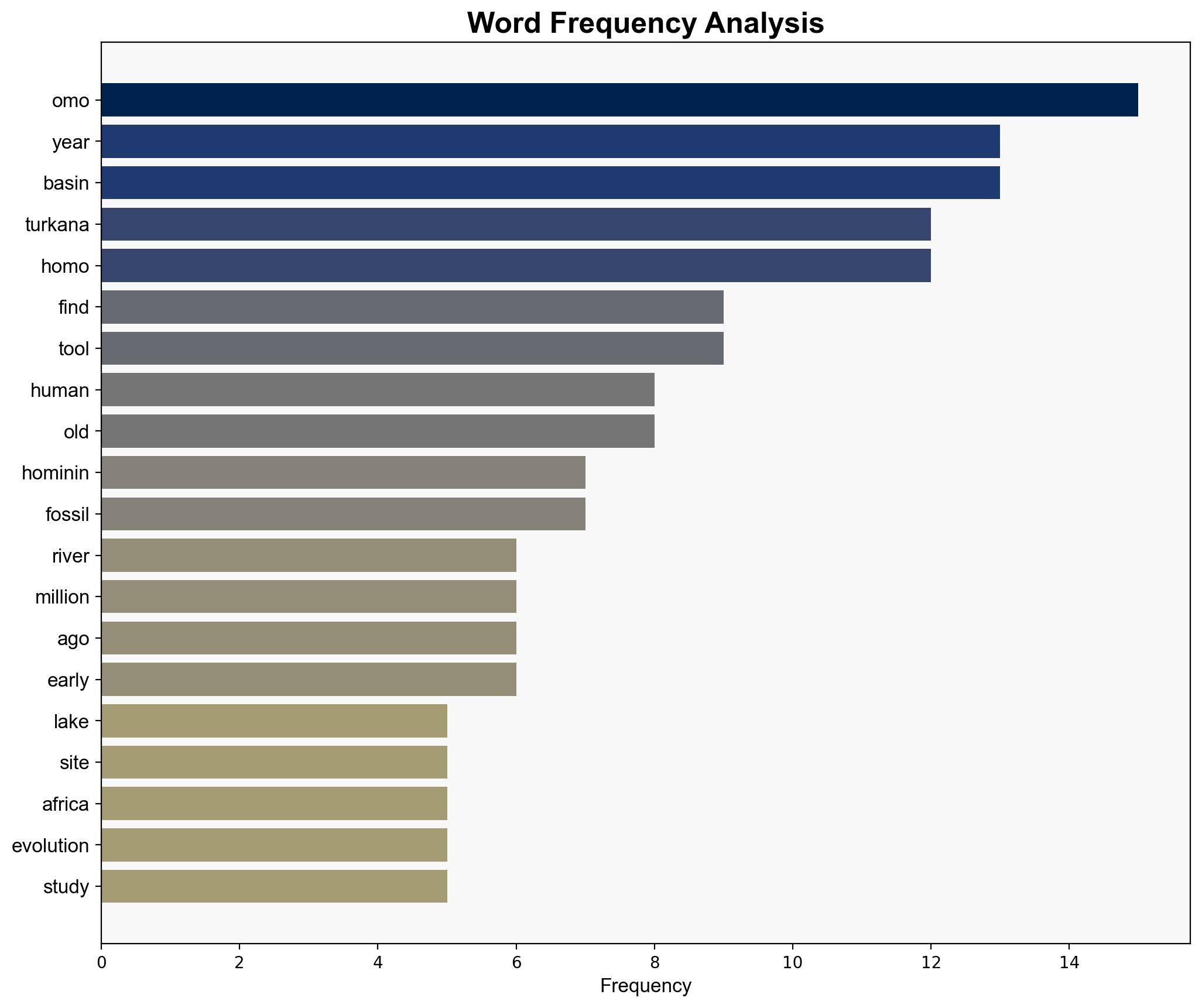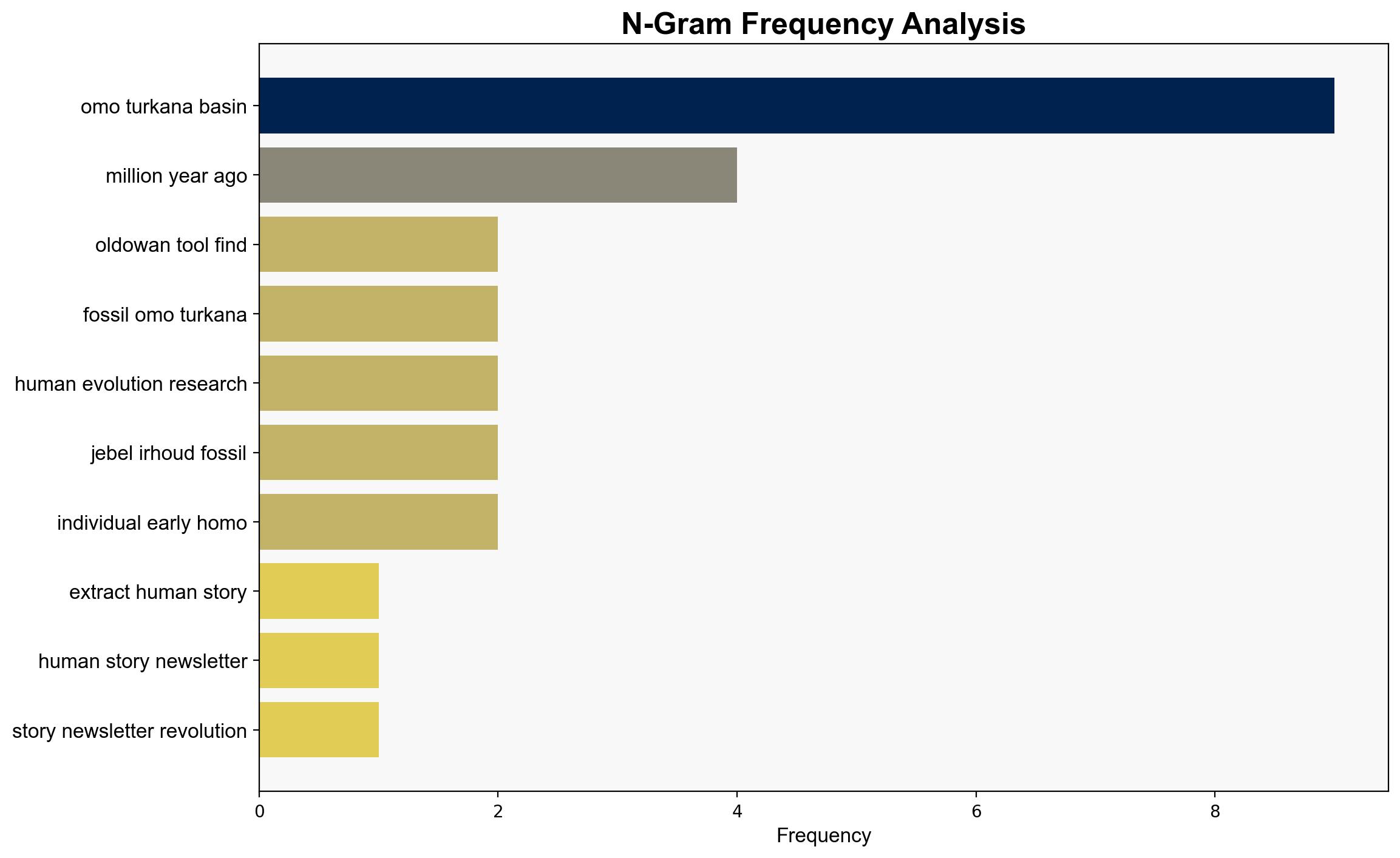Cradle of humanity is still revealing new insights about our origins – New Scientist
Published on: 2025-11-11
AI-powered OSINT brief from verified open sources. Automated NLP signal extraction with human verification. See our Methodology and Why WorldWideWatchers.
Intelligence Report: Cradle of humanity is still revealing new insights about our origins – New Scientist
1. BLUF (Bottom Line Up Front)
The discovery of ancient stone tools near Lake Turkana, Kenya, suggests a more complex timeline of human evolution than previously understood. The most supported hypothesis is that early hominins developed tool-making skills independently across different regions. Confidence Level: Moderate. Recommended action: Encourage interdisciplinary research to further explore the implications of these findings on our understanding of human evolution.
2. Competing Hypotheses
Hypothesis 1: The stone tools found at Namorotukunan indicate that early hominins in the Omo-Turkana Basin independently developed tool-making skills, suggesting a parallel evolution of technological capabilities.
Hypothesis 2: The tools are evidence of cultural transmission from other regions, indicating that early hominins migrated or communicated across vast distances, sharing technological innovations.
Hypothesis 1 is more likely due to the consistency and age of the tools, which align with other independent developments of similar technologies in Africa and Eurasia.
3. Key Assumptions and Red Flags
Assumptions: The tools are accurately dated and correctly attributed to early hominins. The geological context is well-understood and uncontaminated.
Red Flags: Potential biases in dating methods or misinterpretation of the archaeological context. Limited sample size may not represent broader trends.
Deception Indicators: None identified, but reliance on a single site for broad conclusions could be misleading.
4. Implications and Strategic Risks
The findings could reshape our understanding of human evolution, potentially affecting educational narratives and cultural heritage policies. Misinterpretation or sensationalism could lead to misinformation. There is a risk of geopolitical tension if the findings are leveraged to assert regional superiority in human evolutionary history.
5. Recommendations and Outlook
- Actionable Steps: Promote collaborative research initiatives involving archaeologists, paleoanthropologists, and geologists to validate and expand upon these findings.
- Best Scenario: New discoveries confirm independent tool-making developments, enriching our understanding of human evolution.
- Worst Scenario: Misinterpretations lead to academic disputes and public misinformation.
- Most-likely Scenario: Incremental advancements in the understanding of early hominin behavior and migration patterns.
6. Key Individuals and Entities
David Braun, George Washington University; François Marchal, Aix-Marseille University; Camille Arambourg, Yves Coppens, Clark Howell, Richard Leakey.
7. Thematic Tags
Regional Focus: East Africa, Human Evolution, Archaeology, Paleoanthropology
Structured Analytic Techniques Applied
- Causal Layered Analysis (CLA): Analyze events across surface happenings, systems, worldviews, and myths.
- Cross-Impact Simulation: Model ripple effects across neighboring states, conflicts, or economic dependencies.
- Scenario Generation: Explore divergent futures under varying assumptions to identify plausible paths.
Explore more:
Regional Focus Briefs ·
Daily Summary ·
Methodology





